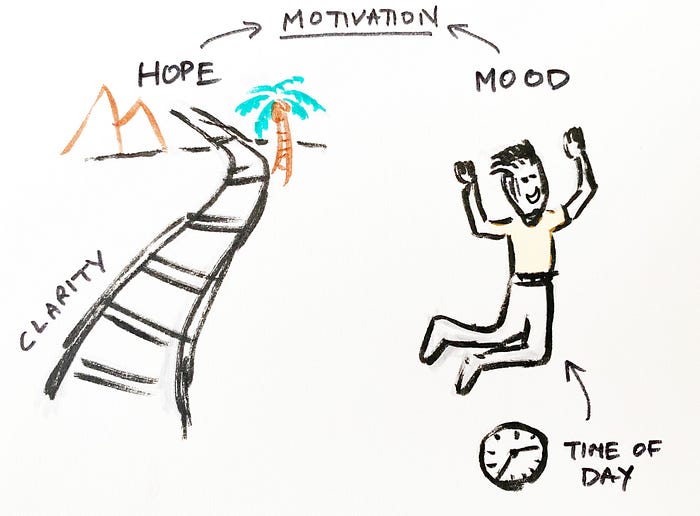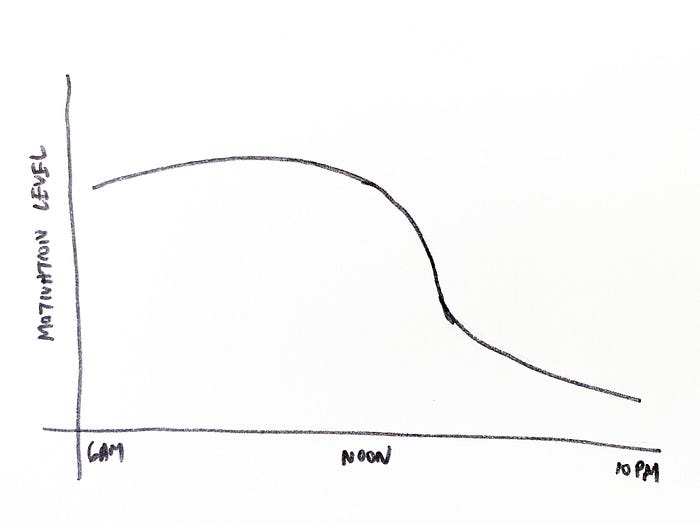Motivation Curve: The Backbone of My Productivity System
Sometimes you’re so motivated that you get a lot accomplished in a short timeframe. Then the intensity wears out, and you are back to having average days. You might feel this even daily–you are motivated in the morning, but the enthusiasm wears off in the afternoon.
For a productivity system to be effective in the long run, you must understand how motivation works. No app, hack, or method can help you if you’re not aligned correctly with your motivation levels.
Motivation is driven by two things: hope and mood.
Hope is the possibility of good things to come. What increases hope is clarity: knowing you are on the right path. You can’t stay motivated if you’re unsure where you’re headed.
Your mood is affected by things like diet, activity, life events, and news. But there’s one thing that affects mood no matter who you are or how good your life is: time of day.

Our motivation levels fluctuate naturally throughout the day. My motivation curve typically looks like this:

To be effective, you must take advantage of this curve. Two things to learn:
- How to order your activities.
- How to boost motivation when it’s low.
Here’s the basic rule:
- Do boring work when the curve is high.
- Do exciting work when the curve is low.
For example, as a software engineer, I fix bugs (problems in my code) in the morning because it’s boring. I can work through them faster when I’m more motivated. When my motivation dips in the late afternoon, I’ll switch to something more exciting, like working on a new feature in the web app. I don’t need as much motivation to keep me going on fun things.
A few questions for you:
- What does your motivation curve look like?
- What work excites you, and what do you find tedious?
- How do you structure your day currently?
(This article is part of my productivity series, Managing Time as an Engineer with Hobbies and Side Hustles)
